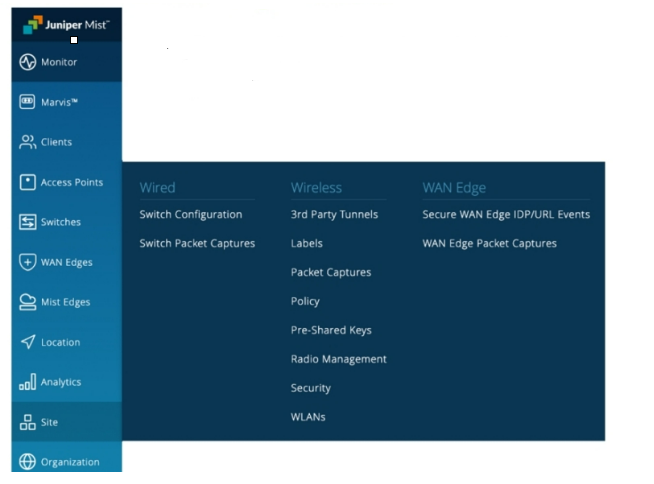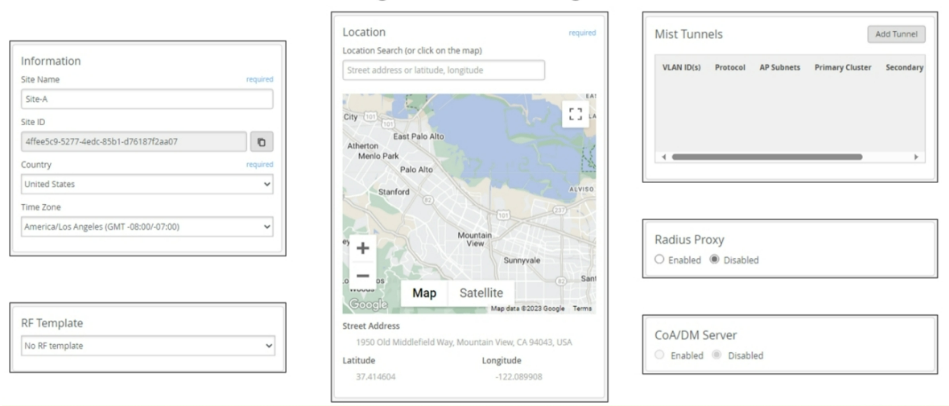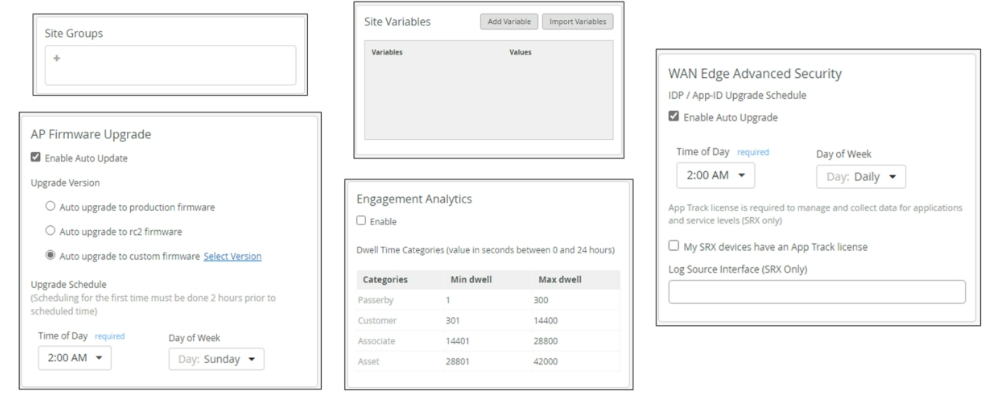EMAIL SUPPORT
dclessons@dclessons.comLOCATION
USJuniper Mist Site Configuration
Site-Level Configuration
Site-level configuration objects are available at the Site menu option. From within each object, you can choose and change each site as it applies to the object’s context.

As an example, from the wireless LANs (WLANs) object, you can create a new WLAN and then apply to one or multiple sites.
Site Configuration :
Sites are created and configured at the organization level: Organization > Site Configuration. The following settings available here get applied to the devices claimed to the site:

Information Section:
-
- Site Name — Name of the site.
- Site ID — The system-generated UUID.
- Country — Setting the location automatically sets the country. However, you can manually change the country to a different one. Setting the correct location also contributes to which Mist cloud you will log in to.
- Time Zone Notes — A place to add any notes about the site.
- RF Template — After a radio frequency (RF) template is created, it is applied to the site here.
- Location — Enter the address or post code of the site to ensure that the correct regulatory conditions are met.
- Mist Tunnels — This is a configuration to set up Juniper Mist Edge tunnels.
- Radius Proxy — Adds Radius Authentication Servers and Accounting Servers.
- Upstream Resource Monitoring — Ability to add resource monitoring.
- Change of Authorization/Disconnect Message (CoA/DM) Server — After setting up your Radius server, you will be able to configure your CoA/DM server, which is a simple process with the Juniper Mist dashboard. Just follow the steps, where all you need is the IP address and shared secret of your server.
The list of settings are continued here:

- Site Groups — Adds the site you are creating to one or more groups. Remember, the configuration templates may have been tied to site groups. Adding this site to a group could lead to an unexpected result, like enabling WLANs and other policies.
- AP Firmware Upgrade — Enable or disable Auto Upgrade. This will be further covered in the "Juniper Access Point" module.
- Upgrade Version — Select a version.
- Upgrade Schedule — Select a time frame to automatically apply firmware updates when available.
- Engagement Analytics — This is where you set Dwell Time thresholds for engagement analytics. The Wi-Fi device falls into one of the four categories based upon its dwell time. You can also configure the days and hours to be monitored.
- WAN Edge Advanced Security — Upgrading the Intrusion Detection and Prevention (IDP) or AppID schedule for security IDP databases.
- Site Variables — These are user-defined variables. They are set as a key,value and can be used as configuration variables throughout Mist. For example, variable = {{JUES_DEV_SSID}} Values = JUES-Dev.

Comment
You are will be the first.




LEAVE A COMMENT
Please login here to comment.